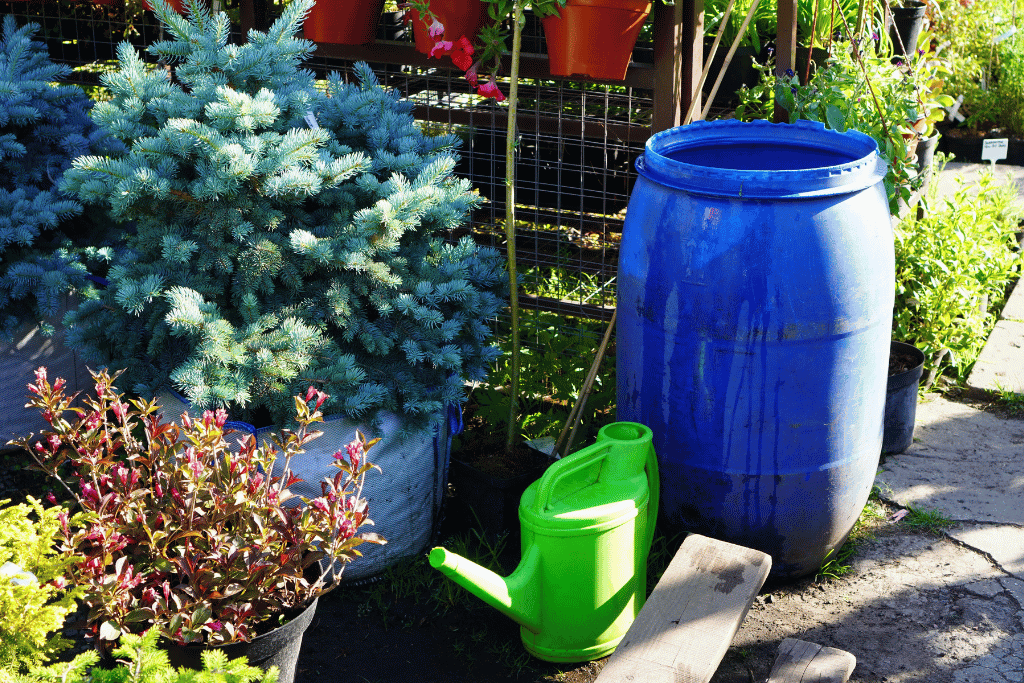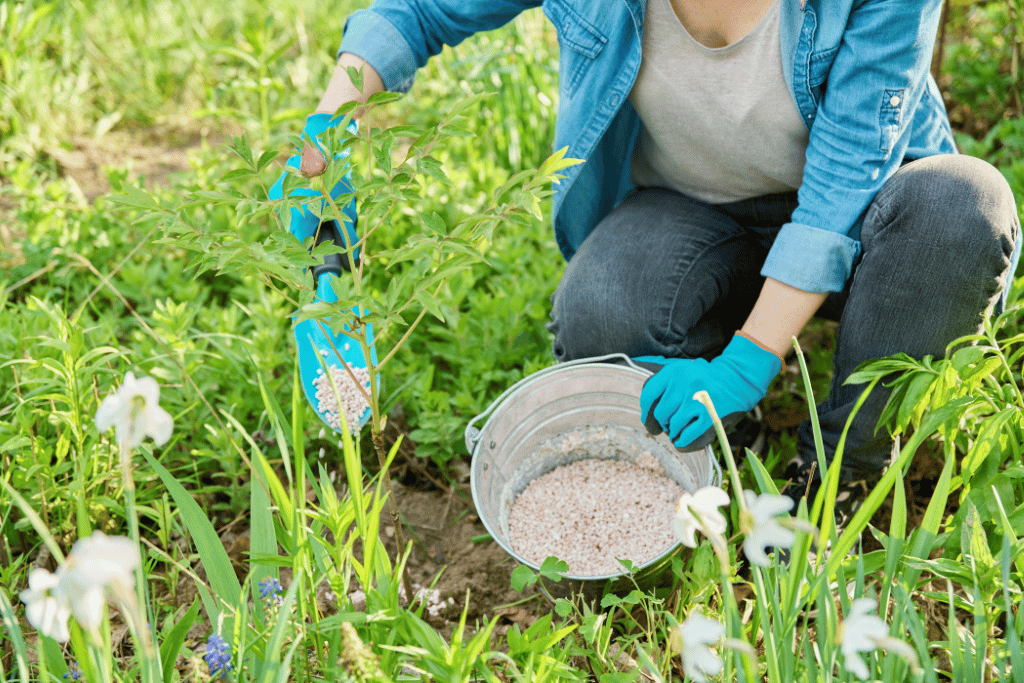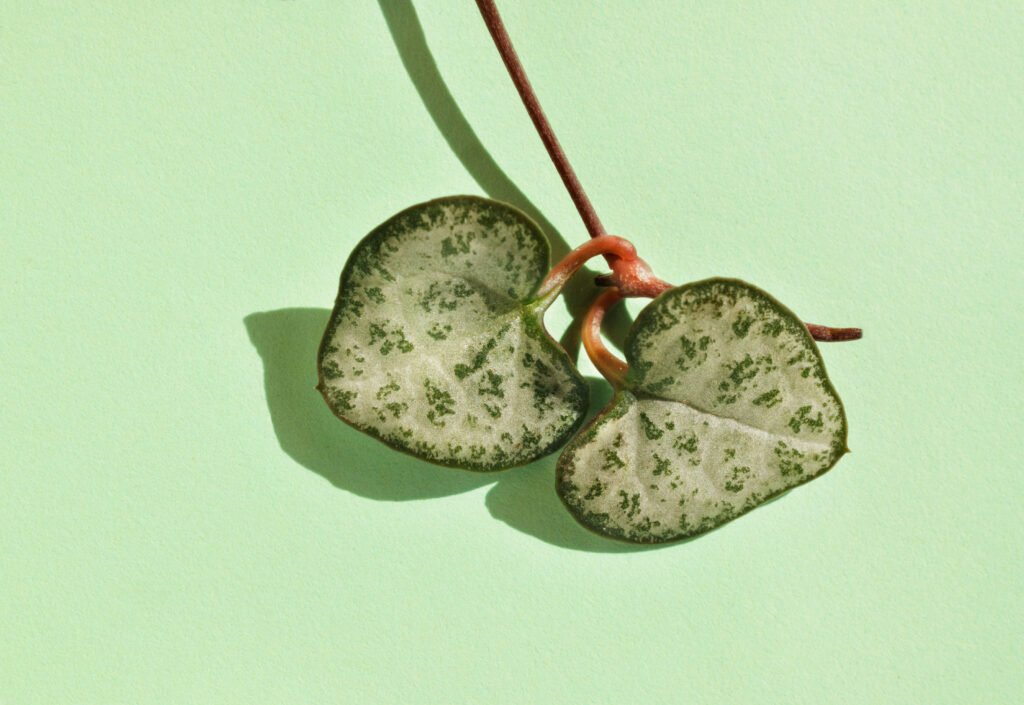
Variegated string of hearts, hearts entangled, or rosary vine are all names of an eye-catching trailing succulent. This plant is loved for its heart-shaped leaves, low maintenance, and easier propagation. If you’re growing this plant for the first time, watering is one of the most important things to learn about.
However, answering “how to water variegated string of hearts” is not as simple as some think. Even though it is a relatively drought-resistant plant, you need to follow some watering best practices.
Therefore, I will discuss the watering requirements of a string of hearts plant in this article. It will include different aspects like watering frequency, watering amount, watering in fall and winter, and other critical considerations.
Let us begin!
When to Water Variegated String of Hearts
No matter what plant you have, the key is to replicate its natural growing conditions. The string of hearts is a succulent-like plant adapted to hot and arid regions. Naturally, your watering should resemble that environment.
Therefore, the typical watering schedule for a variegated string of hearts should be a deep soak every 2-3 weeks when the soil completely dries. However, following this typical schedule without considering other factors can lead to problems.
Here are some factors that you need to consider to set your watering schedule for your string of hearts plant:
- Humidity levels: More humidity will dry out the soil slowly.
- Temperature: High temperature will dry out soil faster
- Pot size: Smaller pots dry out faster.
- Pot placement: Placing the pot near heat or wind sources will dry it out faster.
- Type of soil: is soil well-draining or retains moisture?
One thing that has worked for me instead of sticking to a calendar is the good-old soil-checking method. Instead of worrying about the precise watering schedule, you can check the soil and see if it has thoroughly dried. You can do it by checking the soil’s top 2-3 inches and then checking it from below through the drainage holes. If the soil feels completely dry to the touch, it is time for deep watering.
How Much to Water Variegated String of Hearts
How much to water a variegated string of hearts is as important as watering frequency. When the soil is completely dry, you should water your plant deeply and thoroughly soak the soil. The pot should have multiple holes for the excess water to drain. If you place your pots in trays, empty them after a couple of hours of watering.
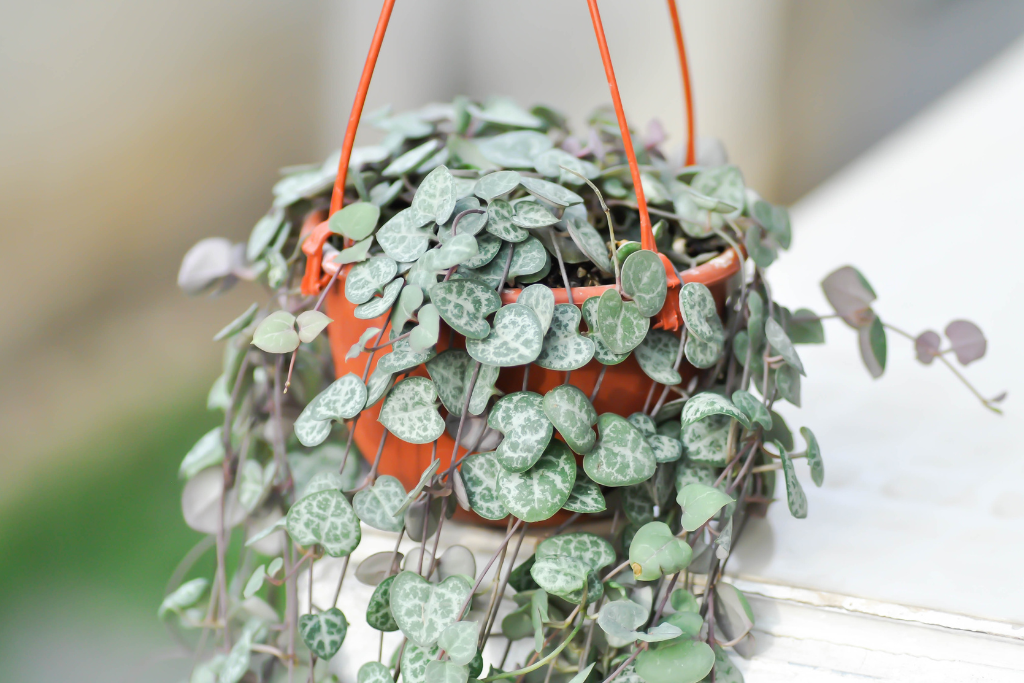
A deep soak is essential to letting water reach the roots. Conversely, lightly watering the plant will shrink and dry out your plant. This method of watering is also similar to the plant’s natural conditions, where the soil is watered deeply by rain and then goes through a prolonged drought until the next rainfall.
Watering Variegated String of Hearts in Fall and Winter
If you’re new at growing a variegated string of hearts, you should know that these plants go dormant during autumn and winter months. During this time, plants conserve energy and limit growth, reducing water requirements.
Therefore, instead of watering every 2-3 weeks, you should water your string of heart plants every 3-4 weeks during this time. Or you could simply check the soil and water it only when it is completely dried out.
Watering Requirements during Propagation
During the propagation and growing stages, a variegated string of hearts needs more water than usual. The key is to water it such that the soil stays moist but not soggy. In terms of days, this typically comes out to watering once every week.
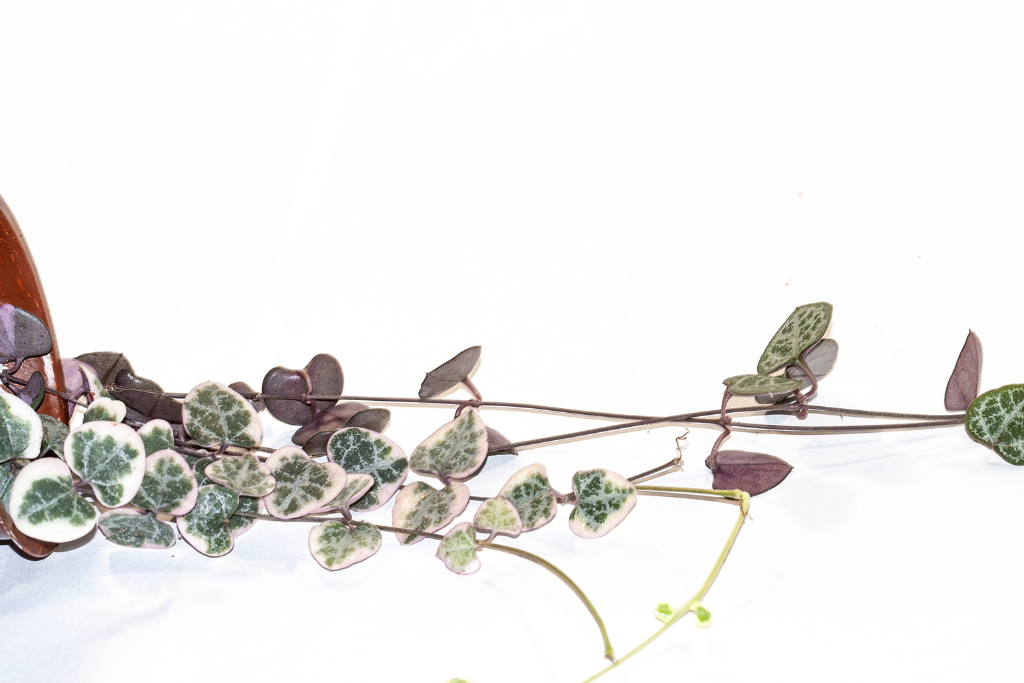
However, you should keep an eye on the growth of your plant. As soon as it reaches a certain level of maturity (about two months), reduce watering to only when the soil is entirely dry.
Signs of Overwatering in Variegated String of Hearts
A variegated string of hearts is more susceptible to overwatering than underwatering. However, some telltale signs can help you fix things before it is too late.
The key signs of overwatering in a variegated string of hearts are yellowing/browning leaves and mushy stems. If you keep on overwatering, the leaves will eventually turn black. You can be certain that the plant is going through root rot at this stage.
The key to avoiding this is to reduce watering when the first signs and symptoms appear. It is possible to recover an overwatered plant if the root rot has not set in. Just water when the soil dries thoroughly, and the plant will gradually recover.
Signs of Underwatering in Variegated String of Hearts
Yes, even a succulent can be underwatered. However, they’re more resistant to it if the dry spell lasts a little while.
Some signs of your variegated string of hearts being under watered are shriveled leaves that can fold easily when you press them. You’ll also notice that the leaves are thinner rather than their signature plump self. Eventually, the leaves will start to turn brown and dry out.
Alternatively, a well-watered string of hearts will have its leaves fresh and firm. If you notice signs of underwatering, simply give your plant a good soak. Keep an eye out, wait for the soil to dry, and then give it a deep soak again. You’ll notice your plant returning to normal after several deep watering sessions.
Soil Selection
A well-draining potting mix is essential in combination with good watering practices to protect your plant from getting over or underwatered. In its natural habitat, the plant grows in sandy/gritty soil, which dries out faster and has better drainage. Therefore, you should purchase a special-purpose potting mix for cacti or succulents. It is readily available at most garden supply stores and online.
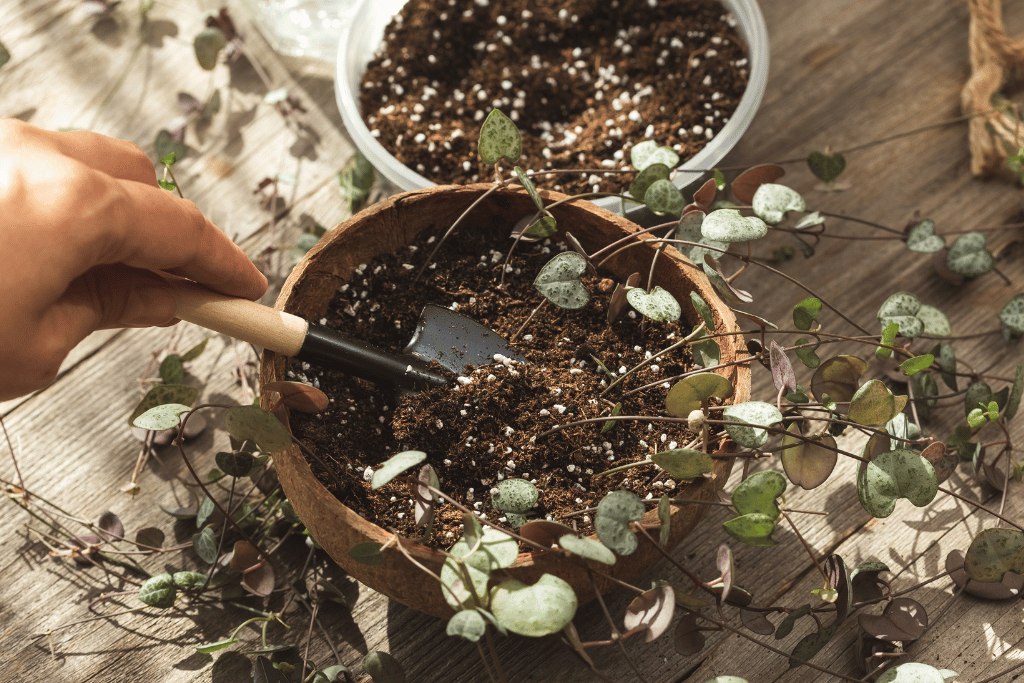
On the other hand, your typical garden soil is not the right choice for potting variegated string of hearts. It tends to retain moisture and lead to root rot.
Pot Best Practices for Variegated String of Hearts
If your pot is not tuned to the needs of your variegated string of hearts, you are more likely to see overwatering issues. The first thing is to create multiple drainage holes in your planter. These holes are essential to keeping the soil at optimal moisture levels. Cover the holes with a layer of pebbles to allow easy passage of excess water and to prevent soil from blocking them.
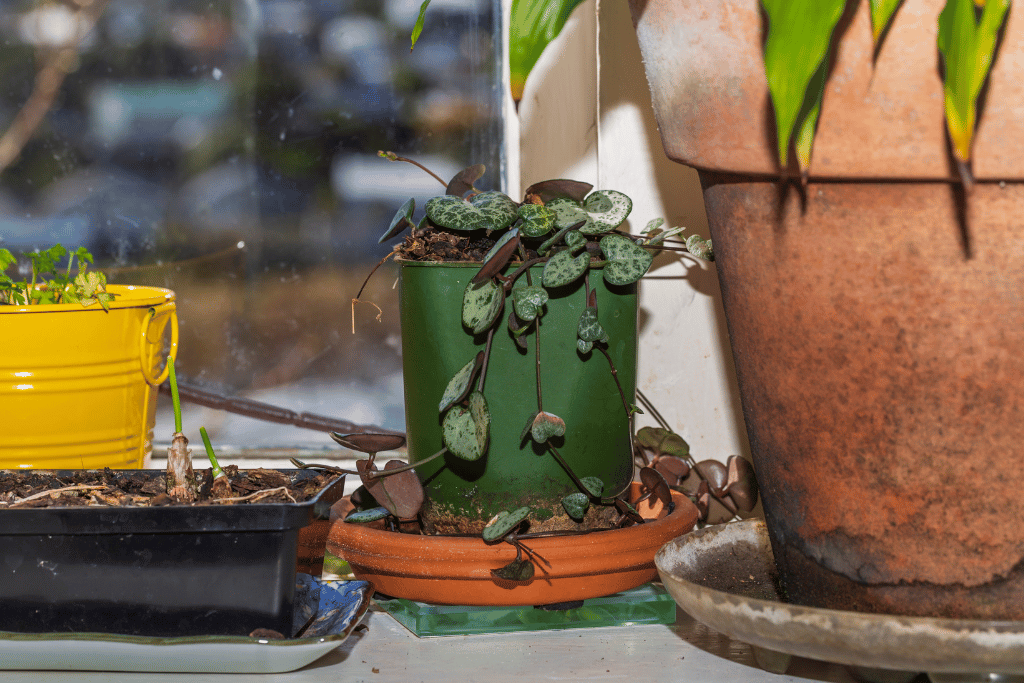
If you use a tray to accumulate excess water, ensure you don’t let the pot sit in it too long. Discard the excess water once it has completely drained out of the plant.
Lastly, if you place your planters in a bigger decorative pot, make sure that it too has drainage holes. An outer pot without drainage holes will retain water and increase moisture.
Final Words
If you can take home one thing from this article, it is to water a variegated string of hearts only when the soil has thoroughly dried out. However, you should also take time to understand particular circumstances and water accordingly. For example, waiting for the soil to dry out completely during propagation will harm your plant.
Therefore, read this article thoroughly to learn how to water a variegated string of hearts no matter the circumstances. Ultimately, you’ll have a healthy plant that will light up your home and make you a happier gardener!


